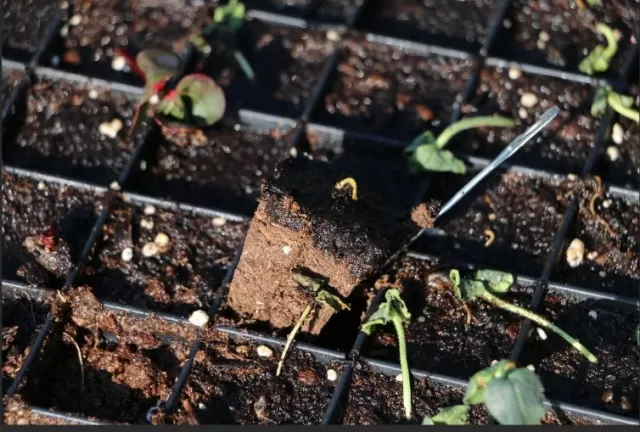Your Garden’s Vital Messages for You. As you gaze upon your flower and vegetable beds, if a sense of despair washes over you akin to the desolation that befell the Garden of Eden following the serpentine encounter, consider the possibility that these very plots of earth might be engaged in a silent but urgent conversation with you.
Nature has an extraordinary way of communicating its needs, often through visual cues and transformations that, when deciphered, unveil a tale of imbalance and longing.
Much like the narrative of Eden, where paradise gave way to turmoil, your garden’s plight could be a sign that a delicate equilibrium has been disrupted. The vibrant blooms that once danced in the sunlight and the verdant greens that promised a cornucopia of flavors might now appear lackluster, a reflection of an ecosystem striving to regain harmony. In these moments of perceived blight, there lies an opportunity to engage in a profound dialogue with the very essence of your garden.
Decoding Nature’s Clues: Unveiling the Silent Conversations of Your Garden!

Have you ever noticed your plants looking stunted or appearing oddly spindly? Are the leaves adorned with unexpected, peculiar hues or adorned with mysterious holes? If only the verdant inhabitants of our gardens could vocalize their needs and concerns!.
In a fascinating twist, they do communicate, albeit through a language of images rather than words.
Your garden’s flora might very well be attempting to convey crucial messages, signaling potential issues with their surroundings or soil quality. They might even be silently beseeching for help against invaders – pests that threaten their well-being, or unintentional human interventions.
The signs of myriad plant predicaments often stem from an imbalance – an excess or deficiency of vital factors. Similar to the tale of Goldilocks, the quest is for the ‘just right’ equilibrium.
Within the following lines, we delve into the insightful revelations your garden imparts, unraveling the enigmatic hints that, when heeded, can restore equilibrium and ensure the vitality of your cherished botanical companions.
Balancing the Flavor of Your Soil: Finding the Perfect pH for a Thriving Garden!
In the intricate language of your garden’s soil, the concept of taste takes on a whole new meaning.
Much like a culinary endeavor, the pH level of your soil can be either ‘too sweet’ or ‘too sour,’ impacting the harmonious growth of your beloved plants.
A pH level of 6.5 emerges as the coveted benchmark, akin to the ‘just right’ seasoning in a culinary masterpiece. Most plant varieties thrive in soil near this pH level, and the results are a testament to their vibrant health and vitality.
However, the botanical world is a diverse one, with some members possessing unique flavor preferences.
Enter the exceptions – the acid-loving plants like blueberries and those captivating blue-flowered hydrangeas, which revel in a slightly more acidic environment.
Conversely, there are the enthusiasts of alkaline conditions, such as the elegant asparagus spears and the delicate carnations.
Should your soil lean towards the alkaline side of the palate, the consequences can be revealed in the form of iron deficiency chlorosis – a signal sent through leaves that turn yellow, with only the veins retaining their verdant hue.
Yet, a soil that boasts an overly acidic disposition might coat your foliage with an enchanting bronze tint or punctuate it with alluring purple spots.
As you embark on the quest for the perfect pH recipe for your soil, remember that just like in gastronomy, a delicate balance yields the most delectable results.
Your garden, a canvas of flavors and colors, awaits your discerning touch. “.
Striking the Balance: Navigating the Fine Line Between Soggy and Parched Soil Conditions!

In the intricate tapestry of your garden’s landscape, the moisture content of the soil weaves a vital thread, dictating the well-being and resilience of your cherished plants.
Much like a symphony conductor striving for perfect harmony, you too must orchestrate the delicate dance between ‘too soggy’ and ‘too dry’ to ensure your garden’s vitality.
Imagine your soil as a tactile experience – a sensory exploration that reveals the state of the earth beneath.
If your soil forms a compact, non-crumbling, sticky ball upon a gentle squeeze, it might be an indicator of excessive moisture, particularly if this sensation lingers. Such persistently damp conditions could hinder the optimum health of your green companions.
Conversely, if the soil crumbles and refuses to hold together, it could be a hint that it contains more sand than desirable, leading to quicker drainage and potential dryness issues.
Plants enveloped in excessively dry soil conditions often present a demeanor of stunted growth, their once glossy allure replaced by a muted, matte appearance.
Like an artist’s brushstrokes lacking vibrancy, these plants yearn for a sip from the well of hydration. On the contrary, those submerged in a waterlogged environment may embark on a disheartening journey towards wilting and yellowing, as their roots drown in a somber shade of rotting brown, a far cry from the pristine white of robust health.
As you tread the path of a mindful gardener, remember that the pulse of your garden’s life emanates from this delicate balance.
Just as a conductor steers a symphony towards its crescendo, your nurturing touch guides your garden towards a harmonious equilibrium of moisture – a symphony of colors and vitality that resonates with nature’s serenade. “.
Sunlight Symphony: Orchestrating the Perfect Balance for Your Plants!
In the grand theater of your garden, the role of sunlight is nothing short of a spotlight, casting its radiant touch upon your botanical ensemble.
Yet, like any artistic production, achieving the ideal lighting – not too dim, not too intense – is pivotal for a flourishing performance.
Picture this: plants yearning for the sun’s embrace, stretching their delicate stems in a graceful ballet towards the luminous source.
In a bid to grasp more light, they unfurl spindly extensions that might appear fragile, like the brushstrokes of an artist seeking inspiration. However, insufficient sun can be a curtain call for the vibrant variegation that once adorned their leaves, or even a stubborn reluctance to burst into bloom, like performers shying away from the stage.
On the flip side, imagine those engulfed by an excessive barrage of rays – a scene where the abundance of light transforms into an overwhelming force.
These actors in your garden’s drama might seem to shrink, their leaves bowing downward in response to the sun’s intensity. The once-lustrous foliage and flowers may fade into a pallid semblance, akin to washed-out costumes under too bright a spotlight.
Occasionally, the drama takes a darker turn, with burns etching their mark on the center stage of leaves, a testament to the intensity of the solar performance.
Just as a master conductor modulates the tempo and volume of a symphony, you, the steward of your garden’s luminous dance, must find the perfect rhythm of sun exposure.
It’s the delicate balance between these two extremes that brings forth a botanical opus, where plants thrive as harmonious melodies amidst the interplay of light and shadow. “.
Nature\’s Thermostat: Navigating the Temperature Tapestry of Your Garden!

In the intricate embrace of your garden’s landscape, temperature assumes the role of a skilled artist, painting the canvas of plant life with delicate strokes of warmth or chill.
However, much like a maestro conducting a symphony, striking the right chord between ‘too hot’ and ‘too cold’ is a symphony of paramount importance for a thriving horticultural masterpiece.
Imagine this scenario: the eager anticipation of spring’s arrival compels you to release your tender, budding plants into the world a bit too early.
Yet, the mischievous Jack Frost weaves his spell, leaving a trail of shriveled and mushy remnants in his wake. It’s a tragic tale of haste leading to a frosty demise, a reminder that patience and the counsel of weather reports hold the key to protecting your fragile green wards.
For those with a heartier disposition, the cool kiss of early spring holds no fear.
Plants like lettuces and cabbages, which relish the embrace of cooler weather, can indeed thrive if carefully transitioned outdoors before the last frost date. This dance of adaptation, known as ‘hardening off,’ nurtures their resilience and ensures a fruitful yield.
However, a tardy planting can transform their fate into an unintended narrative, with flower stalks reaching skyward – a phenomenon known as ‘bolting’ – instead of channeling energy into leaf growth. Under the scorching gaze of excessive heat, bitterness sets in, rendering their harvest far less palatable.
As you embark on this journey of temperature stewardship, remember that your garden’s thriving saga is shaped by this delicate balance.
Just as a seasoned artist blends hues to evoke emotion, you too must blend the elements of warmth and coolness to cultivate a garden that flourishes with vibrant life, undeterred by the capricious whims of temperature. “.
*The information is for reference only.